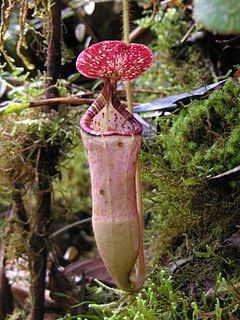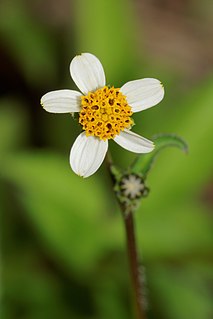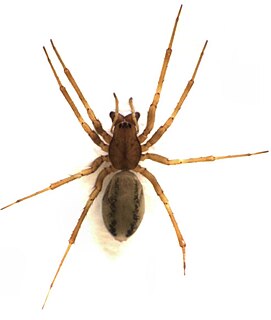
Wolf spiders are members of the family Lycosidae, from the Ancient Greek word "λύκος" meaning "wolf". They are robust and agile hunters with excellent eyesight. They live mostly in solitude and hunt alone, and do not spin webs. Some are opportunistic hunters pouncing upon prey as they find it or even chasing it over short distances. Some wait for passing prey in or near the mouth of a burrow.

Hicksbeachia is a genus of two species of trees in the family Proteaceae. They are native to rainforests of northern New South Wales and southeastern Queensland. They are commonly known as red bopple nut or beef nut due to the bright red colour of their fruits.

The order Pilosa is a group of placental mammals, extant today only in the Americas. It includes the anteaters and sloths, including the extinct ground sloths, which became extinct about 10,000 years ago. The name comes from the Latin word for "hairy". Pilosans are good examples of ecological harmony. Anteaters, for example, feed lightly and for a short time at any one ant nest, allowing the colony to regrow easily. Also, sloths' fur is home to many insects, as well as a type of alga that helps camouflage the sloths.

Nepenthes pilosa is a tropical pitcher plant endemic to Borneo. It is characterised by a dense indumentum of long yellow-brown hairs. Pitchers have a distinctive hook-shaped appendage on the underside of the lid. The specific epithet derives from the Latin word pilosus, meaning "hairy".

Chrysilla is a genus of jumping spiders that was first described by Tamerlan Thorell in 1887. Several species formerly placed here were transferred to Phintella, and vice versa. Females are 3 to 4 millimetres long, and males are 4 to 9 millimetres long. The genus is Persian, derived from the Greek Χρύσιλλα.
Langona is a spider genus of the family Salticidae (jumping spiders).

Badumna is a genus of intertidal spiders that was first described by Tamerlan Thorell in 1890. They are harmless spiders that can be found around human structures and buildings. They are darkly colored, usually with a lighter colored pattern on the abdomen. The most well-known species is B. insignis, also known as the "black house spider" or "black window spider".

Pisaura is a genus of Eurasian spiders in the family Pisauridae.

Bidens pilosa is an annual species of herbaceous flowering plant in the daisy family Asteraceae. Its many common names include black-jack, beggarticks, farmer’s friends and Spanish needle, but most commonly referred to as cobblers pegs. It is native to the Americas but is widely distributed as an introduced species in other regions worldwide including Eurasia, Africa, Australia, South America and the Pacific Islands.

Grevillea pilosa is a low growing shrub which is endemic to the south-west of Western Australia. It grows to between 0.4 and 1 metre in height and produce red or pink flowers between June and December in its native range.
Hicksbeachia pilosa is a small tree in the family Proteaceae. This rare species is endemic to the rainforests of the wet tropics region of northeastern Queensland, Australia. It was first described in 1988 by Australian botanist Peter H. Weston, after a collection by Garry Sankowsky and Peter Hind in 1986 at Bobbin Bobbin Falls in North Queensland. Its specific name is the Latin adjective pilosus "hairy".
Ocyale is a wolf spider genus in the family Lycosidae.
Ocyale lanca, is a species of spider of the genus Ocyale. It is endemic to Sri Lanka.
Langona pilosa is a jumping spider species in the genus Langona that lives in Namibia. The male was first described by Wanda Wesołowska in 2006 and the female in 2011.
Stenosfemuraia is a genus of Venezuelan cellar spiders that was first described by M. A. González-Sponga in 1998. As of June 2019 it contains only three species, found only in Venezuela: S. cuadrata, S. parva, and S. pilosa.

Parafroneta is a genus of South Pacific dwarf spiders that was first described by A. D. Blest in 1979.
Stenosfemuraia pilosa is a species of spider in the family Pholcidae. It was first described in 2005 by González-Sponga as Codazziella pilosa. In 2017, it was transferred to Stenosfemuraia and Chichiriviche costanero was synonymized with it. The species is endemic to Venezuela.









